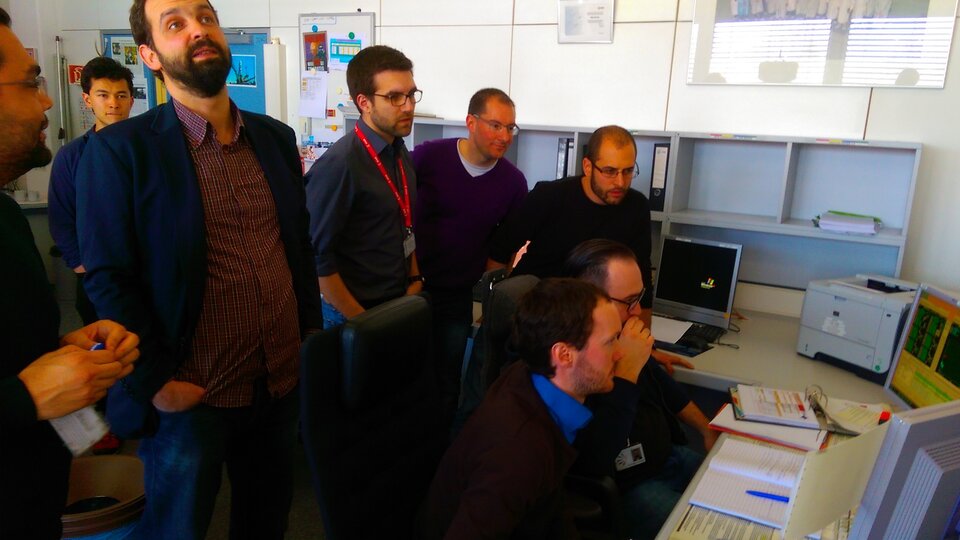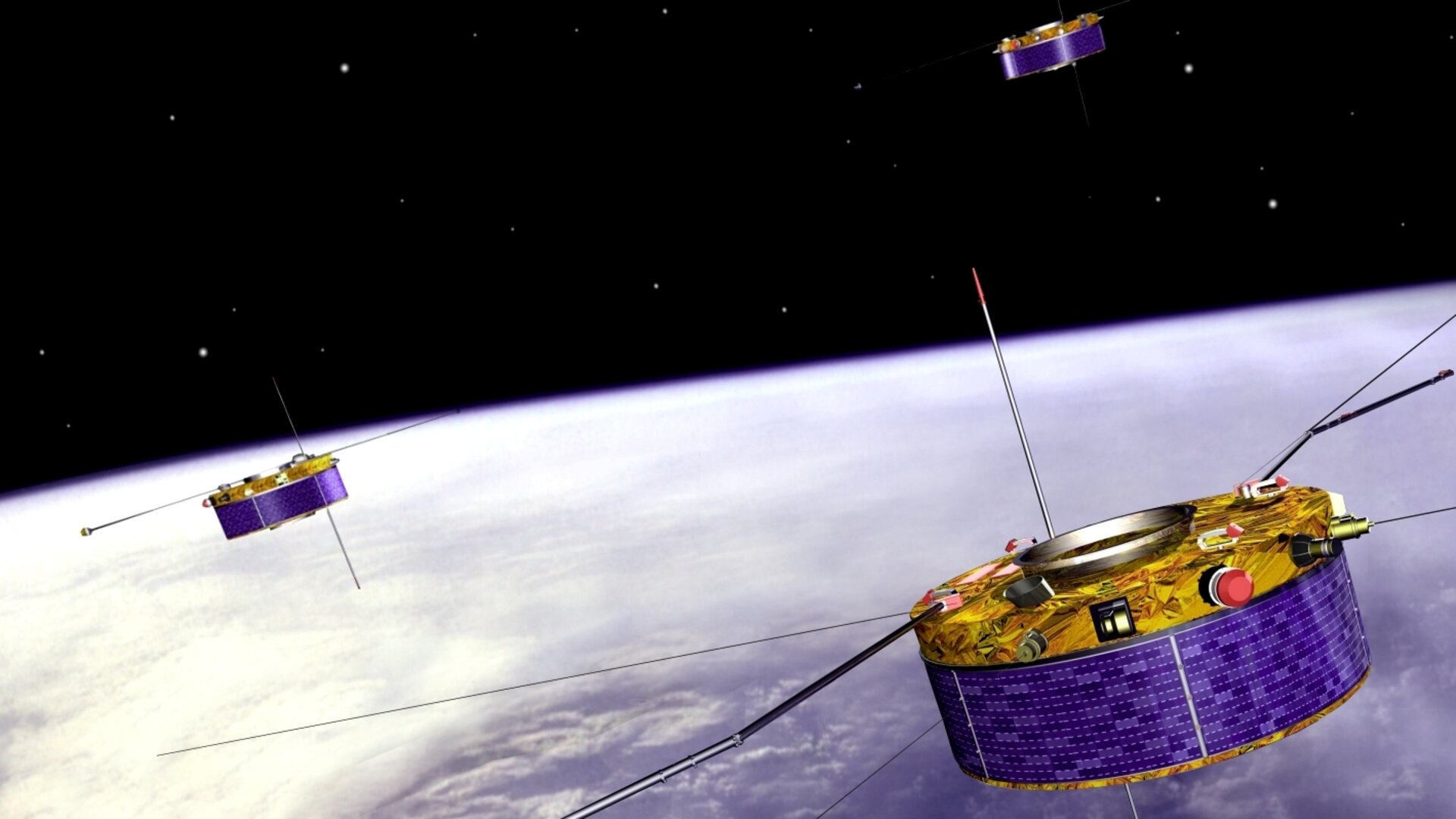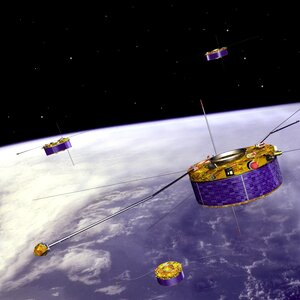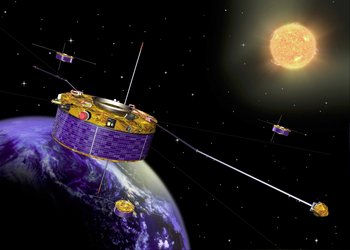Cluster satellite catches up
One of the four Cluster satellites has shifted its orbit to ensure a safe reentry when the time comes, as well as providing a rare opportunity to study how a satellite’s exhaust plume interacts with the solar wind.
ESA’s Cluster quartet, in orbit since 2000, is studying the detailed structures of Earth’s magnetosphere – our protective magnetic bubble – and its environment in 3D.
The identical satellites fly in highly elliptical orbits between 6 km and 20 000 km apart, depending on the regions that each satellite’s set of 11 identical instruments is studying.
With their current paths, three will safely reenter the atmosphere between 2024 and 2026, tugged down to a planned destruction by gravity and atmospheric drag once their fuel is exhausted.
But after 15 years of complex manoeuvring that has enabled the fleet to gather valuable data in three dimensions, Cluster-1 ended up in a rather different orbit – leaving it to reenter much later than the others.
Planning safe reentry

“The delayed reentry exposed it to additional perturbations and undesired natural variations in its orbit, meaning that it might have reentered over the northern hemisphere, where population densities are high,” says Detlef Sieg, a flight dynamics specialist at ESA’s Space Operations Centre, ESOC, in Darmstadt, Germany.
“By performing a thruster burn now, we could bring forward its reentry date to match those of the other satellites and plan for a future safe descent over the much less populated southern hemisphere.”
The sequence of three thruster burns was carried out by the team at ESOC on 9, 17 and 25 March. These will maintain Cluster-1’s orbital position relative to the other satellites, while shifting the angle of its orbit (see Orbital inclination) and make the orbit a little more elliptical.
“The Sun and the Moon will now affect its orbit over the next decade such that the minimum altitude in 2025, after the mission’s science gathering ends, will finally become low enough for the atmosphere to capture it and cause it to burn up safely,” says Detlef.
Largest firing in eight years
The 17 March firing – the largest in eight years for Cluster – was the largest of the three burns, and two aspects made it particularly challenging.
There was uncertainty as to the amount of fuel left in the tanks, and the satellite’s orientation with respect to the Sun was close to the safe operating limit.

“If we weren’t careful, one of the instruments attached to a boom would start shadowing the solar arrays, potentially affecting power generation, which is always a critical issue for any satellite,” notes Spacecraft Operations Manager Bruno Sousa.
Even though the thrusters performed flawlessly, the team spent an anxious 20 minutes watching to see that the Sun angle remained within limits.
“It changed slightly faster than we had predicted in the undesired direction, but at the end it remained under the limit by 0.1º. Nonetheless, we had a finger on the ‘abort’ button throughout,” says Bruno.
Rare chance for unique science
In addition, the flight control team were asked to perform the burns while some science observations continued.
“We also conducted an experiment,” says Philippe Escoubet, Cluster Project Scientist, “suggested by one of our recently selected guest investigators, collecting electric and magnetic data during the thruster firing.
“The measurements will be used to study the interaction between the cloud of gas generated by the thrusters and the solar wind, the plasma emitted by the Sun.”









